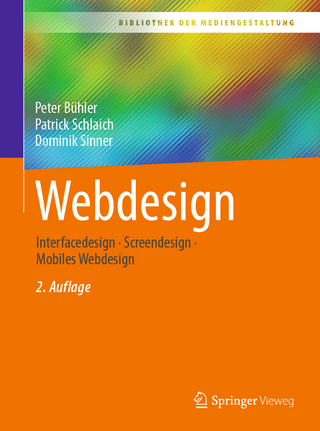
Preparing Scientific Illustrations
Springer-Verlag New York Inc.
978-0-387-94581-1 (ISBN)
Every graduate student, postdoc and scientist knows that images and illustrations can make or break their lecture, poster presentation, and journal or book article. Graphics software and laser printers have placed professional-quality graphics within the reach of everyone. But in the end, whether your audience sees clear, understandable images or a 300 dpi mess depends on whether you've followed the principles presented by Mary Helen Briscoe in this book. Learn the strengths and weaknesses of different forms of visual presentations. Understand when to use a figure, and how much information can be represented in one. See examples of bad, good, and better graphs and tables. Focus on your audience, to learn that a figure prepared for an article may not be ideal for a slide or an overhead. The author also presents information on presenting DNA sequences, protein structures, and other molecular graphics.
1 Introduction.- Learning to Communicate Visually.- An Intention to Communicate.- Good Illustrations.- Planning the Figure.- 2 Drawings and Diagrams.- Line or Continuous-Tone Drawing?.- Doing Drawings.- 3 Photographs.- Photographic Reproduction.- Photographic Figures.- Photomicrographs.- Gels.- Video Images.- 4 Charts and Tables.- Charts.- Tables.- Tables for Slides.- 5 Molecular Graphics.- Genetic Sequences.- Restriction Maps.- Molecular Models.- Software Comparison.- 6 Graphs and Software.- Kinds of Graphs.- Graph Design.- Axis Lines.- Ticks.- Labels.- Label Position.- Design Symbols and Lines.- Texture and Contrast.- Arrows and Brackets.- For Good Graphs.- Graphing Software.- 7 The Journal Figure.- Journal Instructions.- Reduction.- Format.- Labels.- Consistency.- Final Preparation.- The Printing Process.- 8 Slides.- Slide Format.- Labels for Slides.- Color.- Word Slides.- Slides From Books and Journals.- Overhead Transparencies.- Making Slides and Overheads.- 9 Posters.- Plan the Poster.- Poster Text.- Figures.- Poster Layout.- Poster Production.- Poster Purpose.- 10 Using an Illustrator.- Communicate with the Illustrator.- The Illustrator and the Computer.- The Illustrator as a Resource.- 11 Using a Computer.- Letters, Fonts, and Styles.- Use Computer Options to Simplify and Organize.- Computer Drawings and Diagrams.- Bit Mapped versus Vector-Based Graphics.- Computer-Generated Graphs.- Computer Printout.- Conclusions and Suggested Readings.- 12 Drawing by Hand.- Trim, Mount, and Label Tracings.- Trim, Mount, and Label Gels.- Draw and Label Graphs.- Use a Photocopy Machine for Corrections and Changes.- 13 Conclusion.- You Should Learn to Communicate.- You Can Learn.- Sources of Illustrations.
| Erscheint lt. Verlag | 1.12.1995 |
|---|---|
| Zusatzinfo | 54 Illustrations, black and white; XII, 204 p. 54 illus. |
| Verlagsort | New York, NY |
| Sprache | englisch |
| Maße | 178 x 254 mm |
| Themenwelt | Kunst / Musik / Theater ► Design / Innenarchitektur / Mode |
| Mathematik / Informatik ► Informatik ► Grafik / Design | |
| Naturwissenschaften ► Biologie | |
| ISBN-10 | 0-387-94581-4 / 0387945814 |
| ISBN-13 | 978-0-387-94581-1 / 9780387945811 |
| Zustand | Neuware |
| Informationen gemäß Produktsicherheitsverordnung (GPSR) | |
| Haben Sie eine Frage zum Produkt? |
aus dem Bereich


